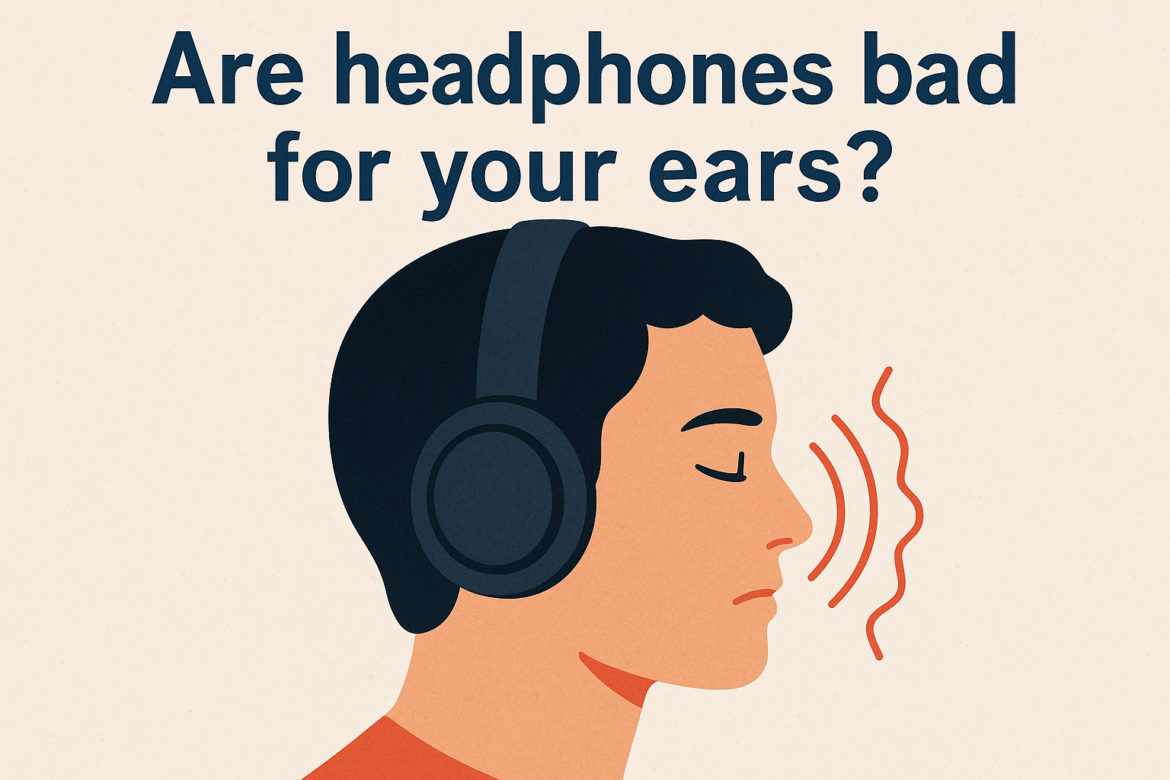Are Headphones Bad for Your Ears?
Headphones have become an integral part of our daily lives, offering a personal gateway to the world of sound. Whether you’re a music enthusiast, a podcast junkie, or a professional in an audio-related field, headphones provide the intimacy of sound without interruptions. Yet, amidst their convenience lies a lingering question: Are headphones bad for your ears? This article delves into the effects of headphone use on ear health, balancing facts with insights to provide a comprehensive understanding.
The Science of Sound and Hearing
Understanding how headphones impact ear health begins with a fundamental grasp of how we hear. Sound travels as waves, entering the ear canal and causing the eardrum to vibrate. These vibrations are translated into electrical signals by the cochlea, a spiral-shaped organ in the inner ear, and sent to the brain.
Volume and Duration: The Twin Culprits
The two primary factors affecting hearing health are volume and duration of exposure. Listening to sounds at high volumes, especially over extended periods, can cause permanent damage to the tiny hair cells in the cochlea. Once damaged, these cells do not regenerate, leading to hearing loss.
Table: Safe Listening Levels
| Volume (dB) | Safe Duration (hours) |
|---|---|
| 85 | 8 |
| 90 | 2 |
| 95 | 1 |
| 100 | 15 minutes |
| 105 | 5 minutes |
Types of Headphones and Their Impact
Not all headphones are created equal. The type of headphones you use can significantly influence their impact on your ears.
-
In-Ear Headphones (Earbuds): These are inserted directly into the ear canal and can deliver sound very close to the eardrum. While convenient, they often encourage higher volumes to drown out ambient noise, increasing the risk of hearing damage.
-
On-Ear Headphones: These sit on top of the ear and generally allow more ambient noise to seep in compared to earbuds. Users may find themselves turning up the volume to counteract this, though they are typically less harmful than in-ear models.
-
Over-Ear Headphones: These enclose the ear completely and typically provide better sound isolation. They can be safer for your ears if used at moderate volumes because they naturally block more outside noise, reducing the need to increase the volume.
Noise-Cancelling Technology: A Double-Edged Sword
Noise-cancelling headphones are a popular choice for those seeking an immersive audio experience. By reducing ambient noise, they allow users to enjoy their content at lower volumes. However, some users might become overly reliant on this technology, leading to prolonged listening sessions that can still result in hearing fatigue.
Hearing Loss: Recognizing the Signs
One of the greatest challenges with noise-induced hearing loss is its gradual onset. Many people do not realize they are damaging their hearing until it’s too late. Key signs to watch for include:
- Ringing or buzzing in the ears (tinnitus)
- Difficulty understanding speech, especially in noisy environments
- A sensation of fullness in the ears after listening sessions
Protecting Your Hearing: Practical Tips
To enjoy headphones without compromising ear health, consider the following tips:
- Follow the 60/60 Rule: Limit headphone use to 60 minutes at a time with the volume at no more than 60% of the maximum.
- Invest in Quality Headphones: Opt for models with good sound isolation or noise cancellation to reduce the need for high volumes.
- Regular Hearing Checks: Schedule routine hearing assessments to catch any potential issues early.
- Use Volume-Limiting Features: Many devices now offer settings that limit maximum volume output, a useful tool for protecting young listeners.
The Role of Personal Responsibility
Ultimately, the responsibility for protecting our hearing lies with each of us. Being mindful of how we use headphones can make a significant difference. It’s not about giving up headphones entirely, but using them wisely.
The Future of Headphones and Hearing Health
Innovation continues to shape the headphone industry, with advances in technology aimed at enhancing user experience while prioritizing ear health. Manufacturers are increasingly aware of the importance of safe listening practices and are developing products that cater to these needs.
Conclusion: A Balanced Approach
While headphones are not inherently bad for your ears, improper use can lead to significant hearing damage. By understanding the risks and taking proactive steps to mitigate them, you can continue to enjoy the world of sound safely. Remember, the key lies in moderation and mindfulness, ensuring that your love for audio does not come at the expense of your hearing health.
Last Updated on October 3, 2025
